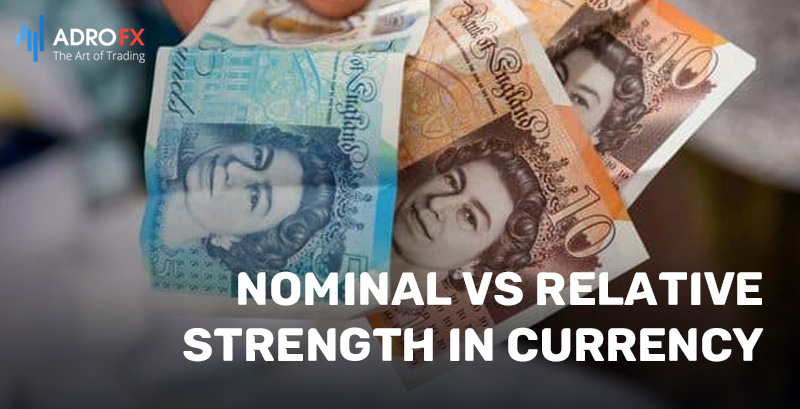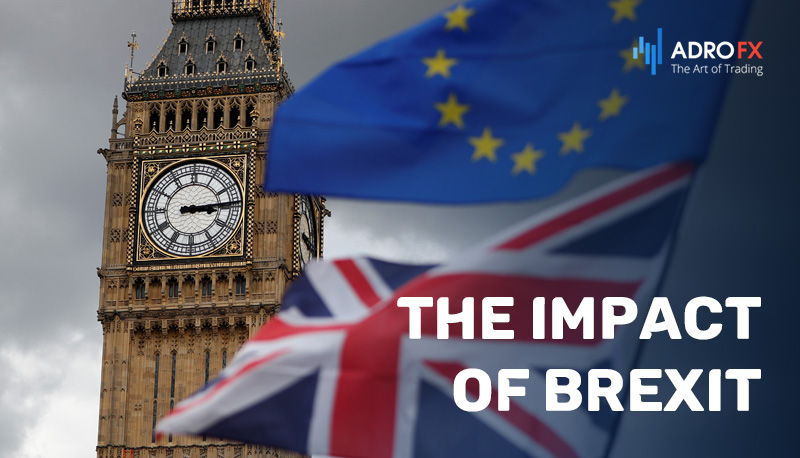The Currency Chronicles: Unraveling the British Pound's Resilience Against the US Dollar

The British Pound Sterling (GBP) and the United States Dollar (USD) stand as iconic currencies with intertwined histories spanning centuries of economic and geopolitical developments. In this article, we explore the origins and evolution of these currencies, delving into their historical contexts and key milestones that shaped their prominence in the global financial system. Furthermore, we examine the concepts of nominal and relative strength in currency, understanding how these measurements play pivotal roles in assessing a currency's purchasing power and its impact on trade dynamics. Lastly, we analyze the profound impact of Brexit on the future of the British Pound, exploring the currency's volatility, inflationary implications, and trade considerations following the UK's decision to leave the European Union. By gaining insights into these vital aspects, we aim to offer a comprehensive understanding of the British Pound's position relative to the US Dollar and its outlook in the dynamic landscape of international finance.
The History of the British Pound and US Dollar
The histories of the British Pound Sterling (GBP) and the United States Dollar (USD) are rich and intertwined, spanning centuries of economic and geopolitical developments. Let us explore the origins and evolution of these iconic currencies:
British Pound Sterling (GBP)
The roots of the British Pound can be traced back to the Anglo-Saxon era, as far back as the 8th century when silver pennies were used for trade. Over time, the pound evolved into a unit of account and a standard for trade in medieval England. The term "pound" itself is derived from the Latin word "libra," meaning a unit of weight.
In the 17th century, the Kingdom of England adopted the gold standard, fixing the value of the British Pound to a specific weight of gold. The gold standard became a fundamental pillar of the British monetary system for centuries to come.
The British Empire's global expansion during the 19th and early 20th centuries further solidified the Pound's status as a dominant reserve currency. As Britain became a leading economic and colonial power, the Pound was widely used in international trade and finance.
However, the aftermath of World War I and the economic challenges of the early 20th century led to a series of devaluations and economic crises for the Pound. In 1931, Britain abandoned the gold standard, temporarily weakening the Pound's standing in global markets.
Despite the challenges, the British Pound persevered, and the United Kingdom's financial and economic resilience helped restore its prominence in international trade and finance. Today, the British Pound remains one of the major reserve currencies and a crucial player in the global financial system.
United States Dollar (USD)
The history of the US Dollar can be traced back to the late 18th century during the American Revolution. In 1792, the US Congress established the US Mint and adopted the US Dollar as the nation's official currency. The term "dollar" originated from the German word "Thaler," a widely used silver coin in Europe.
During the 19th century, the US Dollar faced various challenges, including periods of inflation and financial instability. The Civil War and the subsequent Reconstruction era further tested the resilience of the young nation's currency.
In the early 20th century, the establishment of the Federal Reserve System in 1913 brought stability to the US monetary system, granting the central bank the authority to regulate the money supply and stabilize the value of the Dollar.
The Bretton Woods Agreement in 1944 solidified the USD's position as the world's primary reserve currency. Under this system, major currencies were pegged to the US Dollar, and the Dollar, in turn, was pegged to gold. This arrangement, known as the Bretton Woods system, helped facilitate post-war economic reconstruction and international trade.
However, mounting economic pressures and the cost of the Vietnam War led to the collapse of the Bretton Woods system in the early 1970s. President Richard Nixon ended the Dollar's convertibility to gold in 1971, effectively floating the currency and ushering in the era of fiat money.
Since then, the US Dollar has maintained its status as the world's dominant reserve currency, used for global trade and held in central banks' reserves worldwide. Its influence in international finance, coupled with the economic might of the United States, has cemented the Dollar's position as a linchpin of the global financial system.

Understanding Nominal vs Relative Strength in Currency
Understanding nominal and relative strength in currency is crucial for comprehending the dynamics of foreign exchange markets and assessing the real purchasing power of different currencies. Let's explore the differences between these two concepts:
Nominal Strength
Nominal strength refers to the value of a currency in absolute terms. It represents the currency's exchange rate against another currency or a basket of currencies without considering other economic factors. For example, if the exchange rate between the US Dollar (USD) and the Euro (EUR) is 1.20, it means that one USD can be exchanged for 1.20 EUR.
Nominal strength is vital for measuring the cost of goods, services, and assets in different countries. A stronger currency in nominal terms means that it can purchase more foreign goods and services, making imports cheaper for the domestic economy. Conversely, a weaker currency implies that imports become more expensive, which can boost domestic industries and exports.
However, it's important to note that nominal strength does not provide a comprehensive view of a currency's overall strength relative to other currencies. It doesn't take into account inflation differentials or changes in the purchasing power of the currency.
Relative Strength
Relative strength, also known as real effective exchange rate (REER), considers a currency's nominal strength in conjunction with inflation differentials between the domestic country and its trading partners. It is a more comprehensive measure that reflects the currency's actual purchasing power relative to a basket of foreign currencies.
To calculate the relative strength of a currency, the nominal exchange rate is adjusted for inflation differentials using an index. This index accounts for price levels in both the domestic economy and the economies of trading partners. A rising relative strength indicates that a country's currency has appreciated, making its goods and services relatively more expensive to foreign buyers. Conversely, a declining relative strength suggests a currency depreciation, making its exports more competitive in international markets.
The relative strength of a currency is crucial for understanding its impact on a country's trade balance and competitiveness. A stronger relative strength can lead to reduced exports and a trade deficit, while a weaker relative strength can boost exports and improve the trade balance.

The Impact of Brexit on the Future of the Pound
Brexit, the United Kingdom's decision to leave the European Union, has had a significant impact on the future of the British Pound Sterling (GBP). Since the Brexit referendum in June 2016 and the subsequent negotiations and agreements, the Pound has experienced considerable volatility and uncertainty. Let's explore the impact of Brexit on the future of the Pound:
- Currency Volatility: The uncertainty surrounding the Brexit process and the future trading relationship between the UK and the EU led to heightened volatility in the Pound's exchange rate. The currency experienced significant swings based on the outcomes of negotiations, political developments, and economic indicators.
- Initial Depreciation: Immediately following the Brexit referendum, the Pound experienced a sharp depreciation against major currencies like the US Dollar and the Euro. The uncertainty surrounding the UK's economic and political future prompted investors to sell off the Pound, causing it to reach multi-year lows.
- Inflation and Cost of Living: The depreciation of the Pound had implications for inflation and the cost of living in the UK. As the Pound weakened, imports became more expensive, leading to higher inflation rates. This squeeze on household budgets affected consumers and led to discussions about the potential impact on living standards.
- Trade and Investment: The uncertainty around Brexit caused hesitancy among businesses in the UK and abroad. Companies were unsure about future trade arrangements, regulatory changes, and the overall economic environment. Consequently, some businesses delayed investments or relocated operations, affecting the UK's economic growth.
- Negotiations and Agreements: Throughout the negotiations with the EU, the Pound's value was influenced by developments in the talks. News of breakthroughs or obstacles in negotiations often resulted in short-term fluctuations in the currency's exchange rate.
- Market Sentiment: The Pound's future was also influenced by market sentiment and traders' perceptions of the UK's economic prospects post-Brexit. Positive economic data or optimistic forecasts could boost the Pound, while negative sentiment could lead to declines.
It's important to note that the impact of Brexit on the Pound is ongoing and dynamic. As the UK and the EU continue to negotiate and implement new trade agreements and regulatory frameworks, the currency's future will be subject to further fluctuations and uncertainties.
While the Pound has shown resilience in rebounding from its post-referendum lows, its long-term trajectory will depend on various factors, including the UK's ability to secure favorable trade deals, the strength of its economy, and global economic trends.
As the Brexit process continues to unfold, policymakers, businesses, and investors will closely monitor the Pound's performance, and the currency's future will remain a key element in discussions about the UK's economic prospects in a post-Brexit world.
Conclusion
The British Pound and the US Dollar have navigated through historical challenges, shaping their positions as significant players in the global financial landscape. The Pound's resilience and history as a dominant reserve currency, coupled with the Dollar's post-Bretton Woods reign as the world's primary reserve currency, have solidified their roles in international trade and finance. Understanding the concepts of nominal and relative strength in currency provides essential insights into assessing their real purchasing power and competitiveness. As Brexit continues to unfold, the British Pound's future remains subject to ongoing fluctuations and uncertainties, reflecting the profound impact of the UK's decision to leave the European Union. As policymakers, businesses, and investors closely monitor the Pound's performance, its trajectory will hinge on securing favorable trade deals, economic resilience, and the broader global economic environment. By exploring the history, concepts, and implications, we gain a comprehensive view of why the British Pound stands stronger than the US Dollar and its prospects in the ever-evolving realm of international finance.
About AdroFx
Established in 2018, AdroFx is known for its high technology and its ability to deliver high-quality brokerage services in more than 200 countries around the world. AdroFx makes every effort to keep its customers satisfied and to meet all the trading needs of any trader. With the five types of trading accounts, we have all it takes to fit any traders` needs and styles. The company provides access to 115+ trading instruments, including currencies, metals, stocks, and cryptocurrencies, which make it possible to make the most out of trading on the financial markets. Considering all the above, AdroFx is the perfect variant for anyone who doesn't settle for less than the best.










